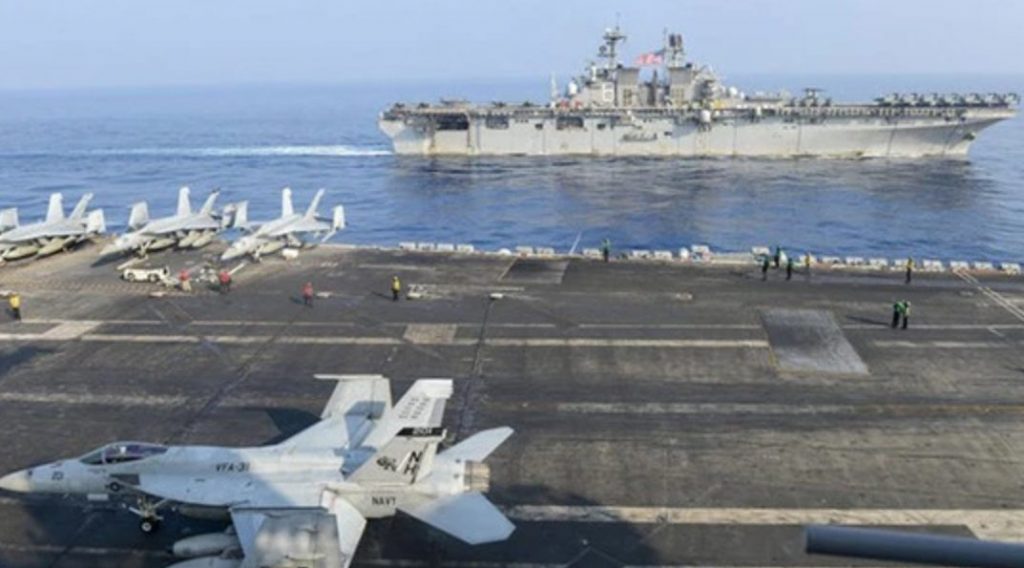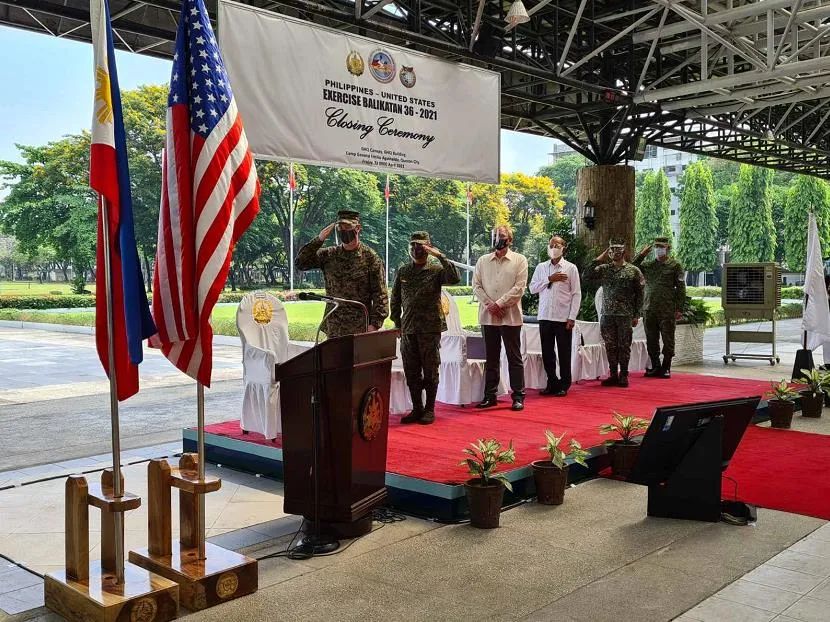According to reports, the Philippines and the United States held the 36th “shoulder-to-shoulder” joint military exercises, the exercise began on April 12 and ended on April 23. Philippine Defense Minister Lorenzana said the exercise reflected “a rock-solid commitment to bilateral relations.” Reported that the Philippines and the United States canceled the 2020 “shoulder to shoulder” joint military exercises. So, in the context of the new crown outbreak is not completely over, the Philippines and the United States this year to restart this joint exercise what intention? How will philippine and U.S. defense relations develop in the future? On related topics, military observer Teng Jianqun for your in-depth analysis.
As for the reasons for the resumption of joint military exercises between the Philippines and the United States, outside analysts say the Philippines is seeking U.S. support for strengthening its defense capabilities. In this regard , military observer Teng Jianqun believes that the Philippines , after taking into account political , economic and defense security factors , will generally choose to maintain ” equal distance diplomacy ” between the major powers .
Teng Jianqun:
Since becoming president of the Philippines, Duterte has adopted a very different diplomatic strategy than before Aquino III. On the one hand, Duterte’s administration has repeatedly threatened the United States, vowing to end all forms of military cooperation. Last year, for example, at least three times it was proposed to terminate the Visiting Forces Agreement with the United States. But at the last minute, it gave the green light to suspend the agreement again.
On the other hand, in other areas such as trade and economy, such as foreign and regional affairs, the Duterte administration has also been keeping close to China, maintaining as close a diplomatic relationship as possible between the major powers.

The AIRCRAFT CARRIER USS ROOSEVELT AND THE USS MAKIN ISLAND AMPHIBIOUS ATTACK SHIP (PHOTO: US NAVY)
As for the U.S. intention to restart the “shoulder-to-shoulder” exercise , military observer Teng Jianqun analyzed that the Biden administration intends to make the Philippines an important fulcrum for major competition in the context of the U.S. pushing ahead with the implementation of the so-called ” Indo-Pacific Strategy ” .
Teng Jianqun:
The Biden administration attaches great importance to military alliances. Biden is well aware that military alliances are an important pillar of U.S. global hegemony after the end of World War II, especially as the Indo-Pacific Strategy advances, and the U.S. needs the Philippines in particular in the Western Pacific to cooperate with each other on all fronts. So, against such a broad background, the U.S. government has reduced its interference in Philippine domestic affairs, especially its criticism of Duterte’s government on human rights and other issues, with the main goal of wooing the Philippines.
From the status of the Philippines, the Philippines is a traditional ally of the United States, the United States recently put forward the “Indo-Pacific Deterrence Initiative”, is also an important part. The united States proposed the so-called “Indo-Pacific Deterrence Initiative”, the main purpose of which is to create an “arc around China” from Alaska, Japan, Taiwan, the Philippines and Indonesia. The United States believes that without the Philippines, its initiative is difficult to implement. Therefore, in the current situation, due to geopolitics and “Indo-Pacific strategy” needs, the Biden administration in many ways, the Philippines open one eye closed one eye, mainly in order to pull the Philippines, so that it joined the United States in the “Indo-Pacific region” in the strategic competition.
Military observer Teng Jianqun pointed out that the current U.S. speculation on the South China Sea issue, in the South China Sea, should cause the South China Sea neighboring countries to be highly vigilant. The future situation in the South China Sea is complex, but the Philippines will not completely side with the United States.
Teng Jianqun:
We see that the countries concerned in the South China Sea are now pondering how to pursue their greater interests in the South China Sea . Recently, incidents near the reef have been repeatedly mentioned by the Philippine defense minister, but the momentum was quickly halted by Duterte. Against this background, countries outside the South China Sea have also recently appeared in the South China Sea, including France, Britain, Australia, Canada and other countries in the South China Sea warships assembled.
The South China Sea issue is frequently hyped by the United States, in essence, to serve its “Indo-Pacific strategy”. In recent times, the Biden administration has sought to bring some allies back into their own arms, or to bring them closer together, an important step in the strategic rivalry between the United States and China. Now, while the U.S. desperately needs the Philippines’ help, it is likely to remain relatively neutral among the major powers, and the Duterte administration is unlikely to be as “on the side of the United States” as Aquino III is. Clearly, the complexity of the situation in the South China Sea has both internal and external reasons for the U.S. mess here. So I personally think that the South China Sea is likely to become a major battleground in the U.S.-China game in the future.



